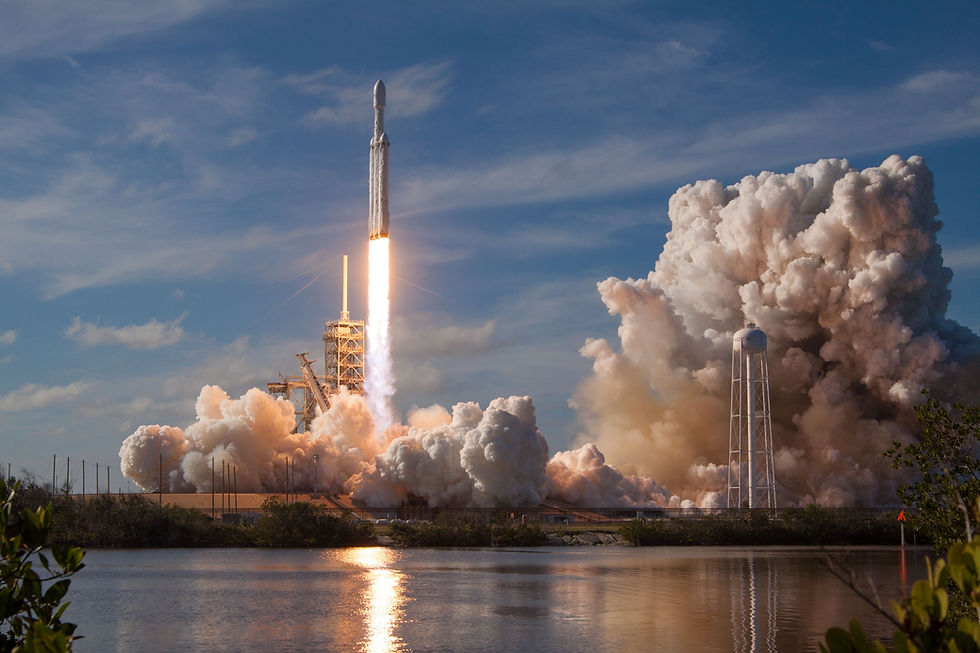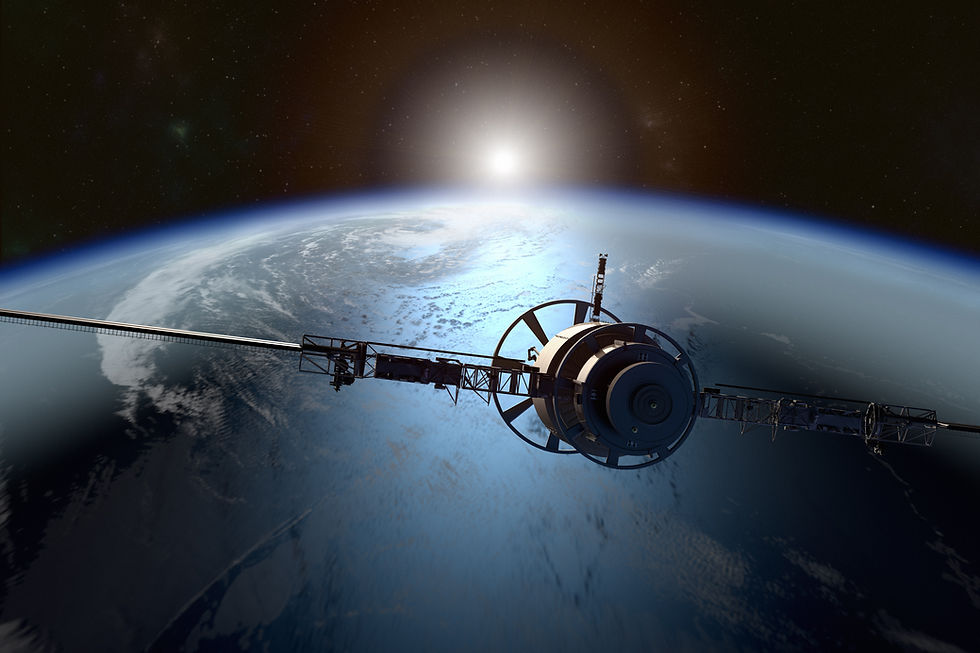Unlocking the Mysteries of Rocket Science: A Journey into the Stars
- JUST JOLLY SERVICE

- Jan 11
- 5 min read

When we think of rocket science, our minds often conjure images of astronauts floating weightlessly in space, launching rockets that defy gravity, and pushing the boundaries of human exploration. It's a field that's as awe-inspiring as it is complex, and though the term "rocket science" has become synonymous with something that's extraordinarily difficult to understand, the truth is, anyone with the curiosity and determination to learn can begin to grasp the fascinating principles behind it.
So, what exactly is rocket science, and why does it seem so elusive? Let’s embark on a journey to explore this incredible field, unraveling its key concepts and understanding how the science of rockets helps us reach the stars.
What is Rocket Science?
At its core, rocket science is the study and application of physics and engineering principles to design, build, and launch rockets. This complex discipline covers a wide range of topics, from basic physics (like Newton’s laws of motion) to advanced concepts such as aerodynamics, propulsion, and orbital mechanics.

Rocket scientists, or aerospace engineers, focus on solving problems related to the design, construction, and operation of rockets. These engineers work on everything from launching satellites and space stations to designing spacecraft for interplanetary exploration.
The Science Behind Rockets: How Do They Work?
At the heart of rocket science lies a simple but powerful concept—thrust. A rocket works on the basic principles of Newton’s Third Law of Motion, which states: "For every action, there is an equal and opposite reaction."
When a rocket engine burns fuel, it produces hot gases that rapidly exit through the rocket’s nozzle at the back. The force of these gases leaving the rocket generates a reactionary force that pushes the rocket forward into space. This is what we call thrust, and it’s the key to propelling a rocket off the Earth and into orbit.
There are two key components involved in this process:
Propellant: The fuel and oxidizer that power the rocket engine. They provide the chemical energy needed for combustion, which results in the production of thrust.
Nozzle: The part of the rocket that directs the expelled gases, concentrating them to generate more force.
This interaction between the rocket's fuel, oxidizer, and nozzle is what ultimately propels the rocket forward at incredible speeds. To reach orbit, rockets must achieve speeds greater than the Earth’s gravitational pull—this is known as escape velocity.
Rocket Types: Exploring the Range of Space Vehicles

Rockets come in all shapes and sizes, each designed to serve specific purposes in space exploration. Let’s take a quick look at the different types of rockets and their uses:
Launch Vehicles: These are the most commonly recognized rockets, used to carry payloads (like satellites, cargo, or astronauts) into space. The Falcon 9 by SpaceX and Atlas V by United Launch Alliance are examples of modern launch vehicles that are responsible for getting satellites and other payloads into orbit.
Space Probes: Unlike launch vehicles, space probes are designed to travel beyond Earth’s orbit, gathering information about distant planets, moons, and asteroids. Examples include the Voyager probes, which have traveled far beyond our solar system, or the New Horizons probe, which flew by Pluto.
Suborbital Rockets: These rockets are used for short spaceflights that don’t reach Earth’s orbit. They are used for scientific experiments, tourism (e.g., Blue Origin), and testing. These rockets are crucial for understanding the conditions of space before launching more ambitious missions.
Reusable Rockets: Companies like SpaceX and Blue Origin have revolutionized the industry by developing reusable rockets. These rockets can return to Earth after completing their mission, reducing costs and increasing the frequency of launches.
The Challenges of Rocket Science: Why is it So Hard?
Rocket science is not called "rocket science" for nothing. The complexities of space travel require solving many difficult challenges, such as:
Engineering Precision: Rockets are subject to extreme conditions such as intense heat, friction, and rapid acceleration. Designing a rocket that can withstand these stresses without malfunctioning is a monumental challenge.
Fuel Efficiency: Rockets need to carry enough fuel to propel themselves, but they also need to be lightweight to reduce fuel consumption. Striking a balance between fuel capacity and weight is one of the biggest hurdles.
Safety: Rockets deal with highly volatile materials, and ensuring the safety of both crew members and payload is critical. Even a small malfunction can result in catastrophic consequences.
Zero Gravity and Space Conditions: Once rockets leave Earth’s atmosphere, they face the challenges of microgravity, radiation, and the vacuum of space. Designing systems that can function properly in these extreme environments is essential for long-term space missions.
Cost: Rocket launches are incredibly expensive. The need for precision, high-end materials, and cutting-edge technology means that space exploration requires massive financial investment. As such, companies and governments must find ways to reduce costs while maintaining reliability and safety.
Why Rocket Science Matters: Exploring the Future

While rocket science may seem like a specialized field only for astronauts and engineers, it impacts us all. Here’s why:
Satellite Technology: Rockets are responsible for deploying the satellites that power our GPS, communication networks, weather forecasts, and more. Our daily lives are deeply connected to space exploration.
Human Space Exploration: With missions to Mars on the horizon, rocket science is essential to the future of human space travel. NASA, SpaceX, and other organizations are working to design spacecraft that will one day carry humans to the Red Planet and beyond.
Innovation in Technology: Rocket science pushes the boundaries of what’s possible. The innovations in materials, technology, and engineering developed for rockets often lead to advancements in other industries, such as medicine, energy, and communication.
International Collaboration: The space race and the study of rocket science bring countries together. From the International Space Station to joint missions to the Moon, rocket science fosters collaboration that transcends borders.
In Conclusion: Rocket Science is Not Just for Experts

Rocket science may seem daunting, but its principles are grounded in fundamental physics and engineering that are accessible to anyone willing to learn. It’s a field that continues to inspire innovation, challenge human understanding, and open new frontiers in space exploration. From the rockets we see launching from Earth’s surface to the future of space tourism and Mars exploration, rocket science is far from just a lofty academic pursuit. It’s the driving force behind humanity’s quest to reach for the stars.
So, next time someone says "it’s not rocket science," maybe take it as a compliment! After all, rocket science is one of the most amazing, fascinating, and complex fields of study known to humankind.
What do you think about the future of rocket science? Will we be able to travel to Mars within the next few decades? Share your thoughts with us in the comments below!
This blog post gives an engaging and accessible overview of rocket science, helping readers understand its significance, the challenges involved, and its potential to shape the future.







Comments